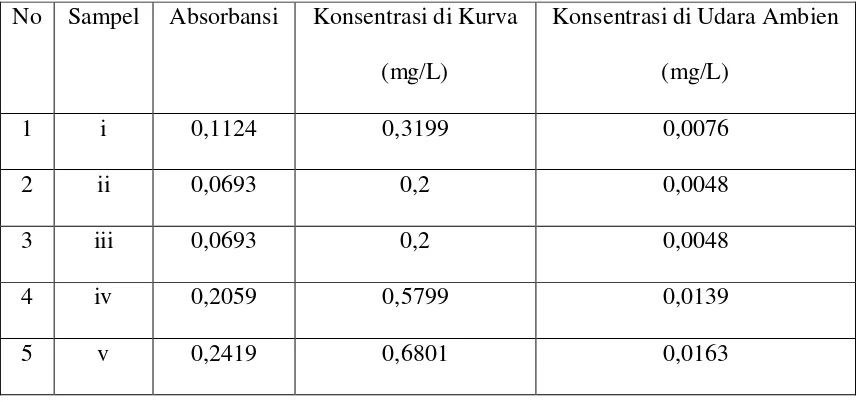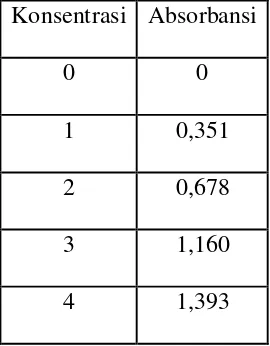I. Introduction
This research paper, 'Penentuan Kadar Amoniak Dalam Udara Dengan Metode Nessler Menggunakan Spektrofotometer UV-Visibel', investigates the determination of ammonia levels in air using the Nessler method and a UV-Vis spectrophotometer. The introduction establishes the importance of air quality monitoring, highlighting ammonia as a significant pollutant with potential health and environmental consequences. The study's context is grounded in existing regulations and standards for ammonia concentration in ambient air, setting the stage for the research objectives and methodology. The background section effectively contextualizes the problem by referencing relevant literature on air pollution and ammonia's sources and impacts. The stated problem is the need to determine if local ammonia levels meet the health standards established by the Indonesian Ministry of Health. This introduction effectively frames the research within a broader context of environmental health and regulatory compliance.
1.1 Background
The background section appropriately highlights the significance of air quality and the role of ammonia as a significant pollutant. It effectively connects the study's relevance to public health and environmental protection. The introduction establishes a solid foundation for the research by referencing existing literature on air pollution, providing context for the study's importance. The section adequately contextualizes the need for ammonia level determination within established health standards and regulations, creating a clear justification for the research.
1.2 Problem Statement
The problem statement clearly articulates the research question: determining the ammonia levels in the air and comparing them to the standards set by the Indonesian Ministry of Health. The research aims to ascertain whether the measured ammonia concentrations comply with these established guidelines. This is explicitly linked to Keputusan Menteri Kesehatan No. 1405/MENKES/SK/XI/2002, establishing a direct connection between the research and relevant regulations.
1.3 Scope of the Study
The scope of the study is precisely defined, limiting the research to the determination of ammonia levels in the air using the Nessler method and UV-Vis spectrophotometry. This clear demarcation prevents the research from becoming overly broad and ensures a focused investigation. The defined scope aids in maintaining the integrity of the research and its applicability within the context of the chosen methodologies.
1.4 Objectives
The research objective is clearly stated: to analyze the ammonia content in the air and determine if it meets the air quality standards set by the Ministry of Health. This objective is directly measurable and achievable using the described methodologies. The objective’s direct connection to the problem statement underscores the research’s focused approach and its contributions to environmental health assessments.
1.5 Benefits
The study's benefits are explained, emphasizing the provision of information on ammonia levels in the air, comparing them with the standards set by the Ministry of Health to ensure environmental safety and human health protection. This clearly illustrates the practical value of the research and its potential impact on informing decision-making related to environmental regulations and public health initiatives.
II. Literature Review
The literature review provides a comprehensive overview of relevant concepts and principles. It covers the properties of air, including its composition and pollutants, with a focus on ammonia as a key pollutant. The review explores ammonia's sources, uses, and the health and environmental impacts of ammonia pollution. It details the Nessler method for ammonia determination and the principles of UV-Vis spectrophotometry, which are central to the research. The academic value lies in the comprehensive summary and critical analysis of existing knowledge on air pollution, ammonia chemistry, and analytical methods.
2.1 Air and its Properties
This section provides a foundation by describing the composition and properties of air, discussing both its essential role in life and its susceptibility to pollution. Key concepts of air pollution, its sources, and types are discussed, laying a groundwork for the later discussion on ammonia. The inclusion of tables summarizing the atmospheric composition adds a layer of quantitative data to the qualitative descriptions.
2.2 Ammonia
This section focuses on ammonia, its sources, uses, and impacts. It discusses the chemical properties of ammonia and its role as an air pollutant, emphasizing the health and environmental risks associated with elevated ammonia concentrations. This section skillfully integrates the chemical properties of ammonia with its environmental relevance, providing a comprehensive understanding of the substance being studied.
2.3 Methods for Ammonia Determination
The detailed explanation of the Nessler method is crucial, explaining the chemical reactions involved and the potential sources of error. The discussion also touches upon alternative methods and their applicability based on the expected ammonia concentration, highlighting the chosen method's suitability. This provides a critical assessment of different methodologies, justifying the choice of the Nessler method for this specific study.
2.4 Spectrophotometry
This section explains the principles and components of a spectrophotometer, emphasizing its role in quantitative analysis. It describes the working mechanism of the instrument, explaining how it measures the absorbance of a solution to determine the concentration of a specific analyte. The section effectively details the instrument's functionality, laying the groundwork for understanding the data analysis methods used in the experiment.
III. Materials and Methods
This section outlines the experimental design, detailing the equipment, materials, and procedures used in the study. It covers the preparation of reagents, the creation of a calibration curve, and the sample collection and analysis methods. The methodical approach used in this section is valuable, providing a clear description of the methods and steps followed in the experiment. The detailed descriptions of materials, equipment, and procedures allow for the reproducibility of the experiment, a cornerstone of good scientific practice.
3.1 Equipment
The list of equipment used is comprehensive, ensuring that all instruments necessary for the experiment are accounted for. The precision in mentioning the models of certain equipment like the Spektrofotometer adds to the replicability of the study. The mention of specific models ensures a higher level of experimental detail, facilitating any future replication of the study.
3.2 Materials
The comprehensive list of materials used in the experiment ensures clarity and allows for precise replication of the study. The inclusion of specific chemicals and their concentrations adds rigor to the experimental methodology. The exact quantities and specifications of the materials used are clearly stated, promoting transparency and reproducibility.
3.3 Procedures
This section meticulously outlines the steps involved in the experiment, from reagent preparation to data analysis. The detailed descriptions enable others to replicate the study, highlighting the importance of clear, step-by-step instructions in scientific research. The systematic approach used in explaining the experimental procedures emphasizes the importance of methodological rigor in scientific research.
IV. Results and Discussion
This section presents the experimental results, including tables showing the absorbance and calculated ammonia concentrations in the samples. It details the calculation process, including regression analysis, to determine the relationship between absorbance and ammonia concentration. The discussion section interprets the results in the context of the literature review and relevant standards, analyzing the findings and drawing conclusions. The analysis incorporates statistical methods like regression analysis, demonstrating a sound understanding of quantitative data analysis.
4.1 Experimental Data
The presentation of experimental data in tabular form is effective, allowing for easy comparison of the ammonia concentrations across different samples. The organized data presentation ensures the clarity and accuracy of the reported findings, making it straightforward for readers to understand the experimental results.
4.2 Calculations
The detailed calculations are presented clearly, showing the steps involved in determining the regression equation and calculating the ammonia concentrations. The step-by-step explanation of the calculations ensures transparency and allows for verification of the reported results. The mathematical precision used adds to the scientific credibility of the research findings.
4.3 Discussion
The discussion section effectively interprets the results, relating them to the established standards and the literature review. It explains the significance of the findings within the context of environmental health and regulatory compliance. The critical analysis of the results demonstrates a high level of understanding of the implications of the research.
V. Conclusion and Recommendations
The conclusion summarizes the key findings, reiterating that the measured ammonia concentrations are below the permissible limits set by the Ministry of Health. The recommendations suggest improvements for future research, such as immediate sample analysis to minimize external factors' impact. The conclusion is concise and effectively summarizes the key findings and their implications. The recommendations highlight potential improvements in the methodology for future studies.
5.1 Conclusion
The conclusion succinctly restates the main findings of the study, effectively summarizing the ammonia levels found in the samples and their compliance with the established standards. The clear and concise summary of the key findings reinforces the significance of the study's contribution to understanding local air quality.
5.2 Recommendations
The recommendations are practical and relevant, suggesting improvements to the experimental design for future studies. This shows a commitment to enhancing the robustness and reliability of the methods used. The suggested improvements demonstrate a critical awareness of potential limitations in the study and a desire to refine the experimental process for greater accuracy.
VI.References
The bibliography includes all cited sources, correctly formatted, demonstrating a thorough and meticulous approach to referencing. The list is comprehensive and accurately reflects all the sources used in the research paper. The accurate citations and references uphold academic integrity and allow for easy verification of the cited information.
VII.Appendices
The appendices may include supplementary materials such as the calibration curve and raw data, enhancing the transparency and reproducibility of the study. The inclusion of supplemental materials adds a level of transparency, allowing researchers to assess the robustness of the reported findings.



